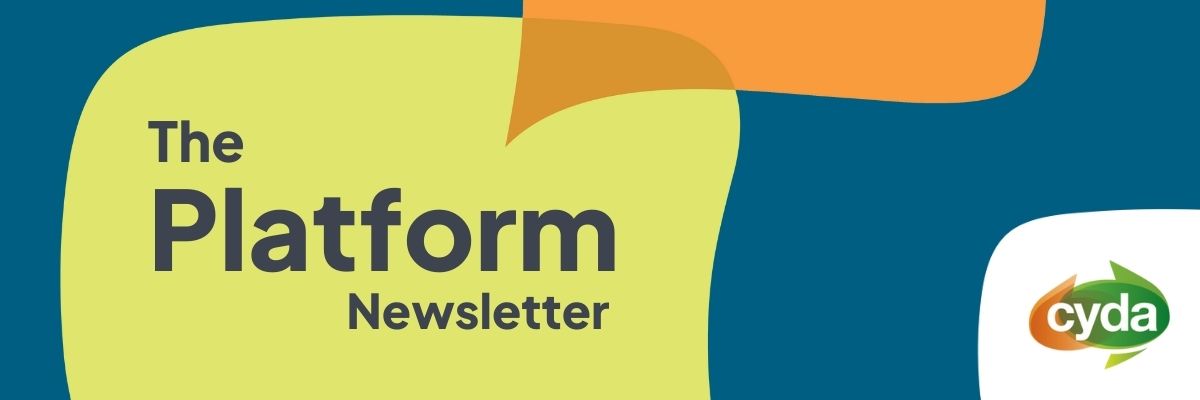Heartbreak High made me cry for all the right reasons
Grace Garrahy talks Chloé Hayden, Heartbreak High and the power of positive representation in media.
There’s a scene in the first season of Netflix’s Heartbreak High when Quinni, an autistic character played by Chloé Hayden, has a meltdown. I remember crying when I watched it because I had never seen someone cry the way I did. I felt seen and validated.
Before my autism diagnosis, I only saw people play autistic characters in TV shows and movies who were either not autistic themselves or who ended up playing into stereotypes. These stereotypes may represent some parts of the autistic community, but it can be harmful when autistic people aren’t playing the characters themselves or aren’t consulted on the portrayal. Each person with disability will present differently and have unique perspectives, so it’s vital to ensure different types of people are represented. This applies to the entire disability community. From physical to invisible disability, we all deserve to be part of contributing to our portrayal.
Being autistic and disabled is a big part of my identity, and previously I didn’t have a proper understanding of any of my diagnoses. I feel like this was mainly because of how disability was portrayed in the media. I remember thinking that since I wasn’t like the stereotypical autistic I saw on TV, I must not have it. This is why the media must show a diverse range of people with disability so that the representation accurately represents all parts of the community.
One day, I was scrolling on social media when I discovered Chloé Hayden would be in the remake of Heartbreak High, playing an autistic character, and I felt so excited! Chloé has positively influenced culture by being the first autistic Australian actress to co-lead a TV series and is paving the way for people with disability to be in disabled roles. This authentic representation has been so impactful for me and so many others within the autism community.

But the bigger issue goes further than just autism; we need more actors with disability in the media as a whole. It is also crucial to ensure that intersectional disability representation is shown on our screens, and that within the autism space, non-speaking autistics and people with high-support needs are represented as well.
Many moments in Heartbreak High made me feel represented, seen and acknowledged. For example, I love how Quinni and her best friend Darren have such a special friendship. There were many scenes where her sensory needs were openly discussed and supported. When she info-dumped her special interests or stimmed, it was embraced by her safe people with open arms. The TV series shows the complexity of navigating high school, offering glimpses of Quinni’s experience being autistic such as moments where people didn’t understand her and and moments of her having to fight to express her needs.
To my surprise, the show even discussed elements like masking, which has been a big part of my life from a young age. I have masked to try and fit in and be accepted, and it led to me struggling to understand who I was and feeling incredibly exhausted. Hearing this terminology in the show meant so much to me. I also remember feeling so shocked that some of these topics were discussed because I had never seen such elements that were so prevalent in my life represented. But we shouldn’t be shocked that this representation exists. Representation like this and true diversity should be standard, embedded within the media on our TV screens, and in books and films.
Furthermore, what I loved most about the show was that the storyline was not inherently about autism or disability but still showed Quinni’s struggles navigating high school and what autism can be like for some people.
Seeing Chloé play her character Quinni made me feel so seen, heard and understood. It was healing for my inner child, who desperately wanted to know she wasn't alone in her experiences.
Chloé said in an interview: “It is so important that young people grow up seeing themselves as disabled and not wishing that they could change, but simply existing and understanding that they are supposed to exist”. This is what representation in the media does for disabled young people. They see someone on their screens and go, ‘oh, that person is like me! I am not the only one going through these things, and my hopes and dreams are possible.’ Representation is more powerful than you know.
Because of the power of true, authentic representation for young people, I personally don’t think non-disabled people should play people with disability in any form of media! For too long, non-disabled people have done this, warping the portrayal of disability and adding to stereotypes. As disabled people, we should be leading the way and be in control of the portrayal within the media. It’s also just the bare minimum that we should be able to play characters who have our own disabilities. It’s not too hard to involve us, and if anything, we would play these characters and bring them to life the best because we live their lives ourselves.
Ultimately, true representation will not be reached until there is a diverse range of people with disability represented. People like Chloé Hayden are paving the way to ensure disabled people are the storytellers for their characters. I would encourage the media to be open to seeing the impact of authentic representation on the world.
This article is an extract from CYDA’s The Platform Newsletter. Receive monthly updates by subscribing below.

About the author:
Grace (she/her) is an OT student accompanied by her assistance dog, Sebastian. Grace’s lived experience navigating the world with disability, mental health, chronic illness and neurodivergence has led to her passion for working with disabled people. She is particularly passionate about representation, accessibility, inclusion and awareness for invisible disabilities.

The Platform is our newsletter for young people with disability, featuring interviews, opportunities and news on the issues that matter to you!







